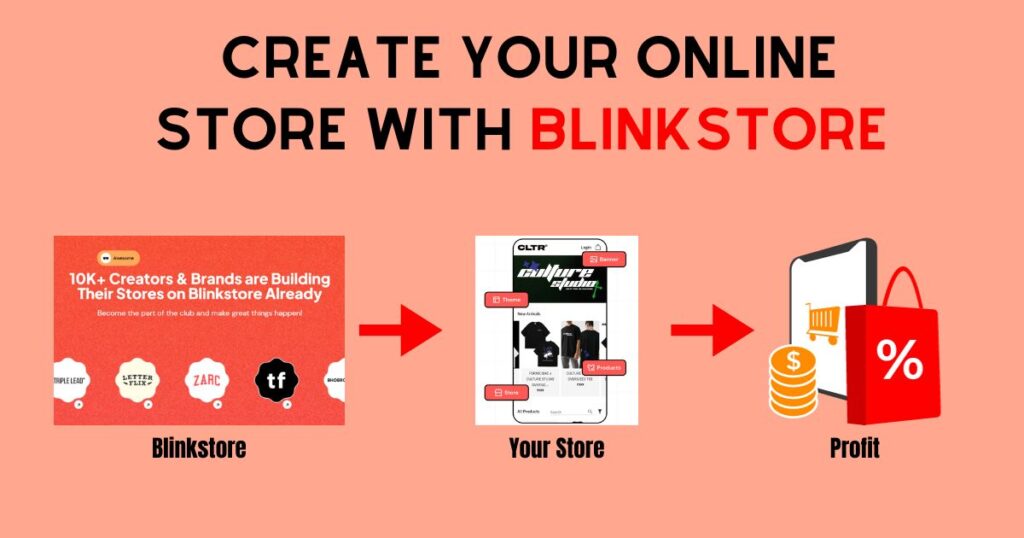In today’s competitive environment, it is entirely possible to start a successful greeting card business. Our guide will show you how to start a greeting card business in 2024 in a few steps. Guess what? Greeting card sales are expected to reach $22 billion by 2025, indicating a significant growth in the greeting card business.
Table of Contents
This blog will walk you through the process and highlight the opportunities available in the greeting card business. Although it is not that simple, this guide will give you a good starting point. Let’s dive in.
Pros and Cons of Greeting Card Business
Before getting into the guide, let’s see how good greeting card businesses are in reality by pointing out the pros and cons:
Pros:
- Creativity and Expression: If you enjoy expressing sentiments through art and words, a greeting card business provides a creative outlet. You can design cards that evoke emotions and resonate with people.
- Low Entry Barriers: Starting a greeting card business can be relatively affordable, especially if you begin on a small scale. You can create cards from home and gradually expand as your business grows.
- Flexible Working Hours: As a card designer, you have the flexibility to choose your working hours. This is especially beneficial if you are managing the business alongside other responsibilities.
- Emotional Impact: Greeting cards often mark significant life events. Your creations have the potential to become cherished mementos. Creating a positive emotional impact on both the sender and the recipient.
- Diverse Market Opportunities: Greeting cards cater to a wide range of occasions and audiences. This allows you to explore diverse market opportunities. You can create cards for birthdays, holidays, weddings, and more.
Cons:
- Market Saturation: The greeting card industry can be highly competitive and saturated. Standing out in a crowded market requires unique designs and effective marketing strategies.
- Seasonal Sales Fluctuations: Greeting card sales often fluctuate with seasons and holidays. This can lead to uneven income throughout the year, making financial planning challenging.
- Production Costs: Quality materials and printing can be costly. Balancing the production costs with setting a reasonable retail price is crucial for profitability.
- Dependence on Trends: Trends in design and sentiment can change rapidly. Staying relevant may require constant adaptation to consumer preferences, which can be time-consuming.
- Distribution Challenges: Getting your cards into retail stores or finding reliable distributors can be a hurdle. This aspect of the business requires strong networking and relationship-building skills.
- Emotional Investment: While creating emotionally resonant cards is a strength, it can also be a challenge. Negative feedback or lackluster sales can be disheartening. This requires a balance between personal attachment and business pragmatism.
- Market Awareness: Marketing is crucial in a creative business. Creating awareness and building a customer base requires time, effort, and potentially extra costs
Step-by-Step Guide on How to Start Your Greeting Card Business

Now that you know the pros and cons, let’s begin with How to Start Your Greeting Card Business, the step-by-step guide:
Step 1: Target Your Audience and Marketing
a. Create a Brand Look and Logo
In a sea of cards, stand out. Make a special look for your brand, including a logo that people remember. Keep things the same, like colors and style, so people know it’s you.
Pro Tip: Keep your brand look the same for people to recognize it easily.
b. Get a Website and a Name
In the online world, your cards need a home. Get a cool name for your website that matches your brand. Your website is like a store that’s open all the time. Make it easy for people to look around and buy cards.
Tool Tip: Use easy platforms like Blinkstore or WordPress to build your online store.
Also read: How To Start an Ecommerce Business In India – 2024 Best Guide
c. Use Social Media and Emails for Promotion
Be part of the online fun. Use Instagram, Facebook, and Pinterest to show off your cards. Share pictures and stories. Don’t forget email – it’s like talking directly to people who like your cards.
Statistic: Many businesses say email is important. The average email open rate across 200 million emails was 34.51%, and the average click rate was 1.33%.
Also read: How to Use The Facebook Ad Library to 10X Your Ad Performance
Step 2: Identify Your Greeting Card Niche
a. Research Popular Card Occasions
To kickstart your greeting card business, look at occasions. From birthdays and anniversaries to baby showers, the possibilities are vast. Identify the trending themes that resonate with your potential customers. For example, data shows that personalized and niche-specific cards, such as those tailored for unique hobbies or interests, are gaining popularity.
b. Consider Seasonal Cards for Holidays
Extend your creativity by giving out seasonal cards. Imagine your designs becoming synonymous with joyous occasions like Christmas or Thanksgiving. This not only adds a fresh twist but also positions your cards as must-haves during festive seasons.
c. Think About Everyday Cards (Birthdays, Anniversaries)
Tap into the everyday moments that matter to people. Birthdays, anniversaries, or just a friendly ‘hi’ – these everyday cards hold timeless appeal. Catering to these occasions ensures a steady demand for your cards, contributing to consistent sales throughout the year.
d. Find a Unique, Underserved Niche
Set your brand apart by exploring unique and underserved niches. Whether it’s quirky pet-themed cards or elegant handmade designs, finding your niche allows you to establish a distinctive identity in the market. This not only attracts a dedicated customer base but also minimizes competition.
Step 3: Understand Legal Requirements
a. Register Your Business
Legitimize your venture by officially registering your greeting card business. Choose a catchy business name that reflects your brand identity. This foundational step not only provides credibility but also protects your business legally.
b. Choose a Business Structure (LLC, Sole Proprietorship)
Navigate through the legal landscape by deciding on a business structure that aligns with your goals. Whether opting for a Limited Liability Company (LLC) or a Sole Proprietorship, this decision impacts liability and taxation. Consider consulting with a legal professional to make an informed choice.
c. Apply for Tax IDs like EIN
Handle the necessary evil of taxes promptly by obtaining an Employer Identification Number (EIN). This not only keeps your business compliant with tax regulations but also opens avenues for potential partnerships and collaborations.
d. Check for Necessary Licenses or Permits
Ensure a hassle-free operation by securing the required licenses or permits. This step crosses all ‘T’s and dots all ‘I’s, preventing legal complications down the road. Research local regulations to confirm compliance.
Step 4: Learn About Greeting Card Design and Printing

a. Explore Different Card Formats (Flat, Fold-over)
The canvas for your creativity lies in card formats. Whether opting for flat designs for simplicity or fold-overs for added elegance, your choice sets the stage for artistic expression. Consider showcasing examples on your website or social media to provide visual clarity to potential customers.
b. Consider Card Materials (Paper Type, Thickness)
Elevate the tactile experience of your cards by delving into the world of materials. Understand the nuances of paper types and thickness to enhance the quality of your creations. Pro tip: Share behind-the-scenes glimpses of your card-making process to connect with customers on a personal level.
c. Research Printing Options (Digital vs. Offset)
The choice between digital and offset printing significantly impacts the outcome of your cards. Dive into the details to understand the pros and cons of each method, considering factors like budget and design intricacy. Integrating high-quality visuals or infographics can aid readers in grasping the differences.
d. Factor in Envelopes and Packaging
Complete the customer experience by carefully selecting envelopes and packaging that complement your cards. Creating a delightful unboxing experience not only enhances brand perception but also encourages repeat business. Share packaging tips and examples to guide fellow entrepreneurs in creating a memorable brand image.
Step 5: Source a Greeting Card Manufacturer
a. Look for Printers Specializing in Short-Run Orders
If you’re starting small, seek out printers specializing in short-run orders. This approach allows you to test the market without the burden of excessive inventory. Share success stories or case studies of businesses that thrived through strategic partnerships with such printers.
b. Get Quotes from Domestic and Overseas Manufacturers
Cost considerations are crucial. Get quotes from both domestic and overseas manufacturers to strike the right balance between quality and affordability. Leverage tools or platforms that ease easy communication and negotiation with potential suppliers.
c. Inquire About Turnaround Times and Least Orders
Time is money in the business world. Inquire about turnaround times and least order requirements to ensure your cards reach customers promptly without straining your resources. Providing insights into efficient inventory management practices can enhance the practical value of this information.
d. Review Printer Quality Standards
Safeguard your brand’s reputation by thoroughly reviewing the quality standards of potential printers. Consider sharing a checklist or guide on what to look for when assessing printer quality to empower other entrepreneurs in making informed decisions. Mentioning industry statistics on customer satisfaction related to print quality can add credibility to your recommendations.
Step 6: Set Up Your Greeting Card store

Dream big and reach out to bigger stores. But first, do some detective work. Find out how these stores work and what they need. This helps you work well together and reach more people.
Tool Tip: Use sites like Chain Store Guide to learn about big retail stores.
a. Building Relationships with Retailers and Distributors
Start by getting to know local shops and bookstores in your community. Don’t forget cute boutiques! Being in these places makes your cards popular locally.
Pro Tip: Be personal. Make special designs for each local shop.
b. Pitch to Online Markets (Etsy, Amazon Handmade)
Your cards can be famous online too! Etsy and Amazon Handmade are big places where lots of people shop. Make a pitch that shows off your unique cards, like a beautiful online display.
c. Explore Greeting Card Distributors
Want to grow more? Look into greeting card distributors. They can help put your cards in many stores without you doing much. Check out options like Blue Mountain Arts or Sunrise Greetings for wider distribution.
Pro Tip: Make friends with distributors to know what’s popular and get good opportunities.
Step 7: Go to Shows and Fairs
a. Meet Other Sellers and Customers
Shows and fairs are like big markets for your cards. Talk to other sellers for help and make friends with customers. Get feedback and turn people into fans.
Pro Tip: Make your booth look nice so more people notice you.
b. Give Deals to Get Noticed
Everybody likes a good deal, especially at events. Offer discounts at shows and fairs to get more people interested in your cards. It makes your brand known and remembered.
What Will the Future of The Greeting Card Business Look Like?
In 2024, the greeting card business is far from outdated, but it’s evolving. The key is adaptation and innovation:
Unique Value: Physical cards offer a personal touch that digital greetings lack. This emotional connection is the unique value proposition.
Embracing Technology: Integration with digital elements enhances the greeting card experience. This attracts new audiences who appreciate a blend of tradition and innovation.
Catering to Specific Needs: To stand out, businesses must target niche markets and emphasize personalization, allowing customers to customize cards for unique occasions.
Building Community: Creating a sense of community around the act of sending and receiving greetings is crucial. This involves fostering connections and celebrations through online platforms and events.
Greeting Card Business Ideas

You can consider these ideas to start your greeting card business:
1. Customizable Pop-up Cards
Design cards that not only have personalized messages but also pop-up elements. These 3D cards add an extra layer of surprise and uniqueness.
2. Interactive Augmented Reality (AR) Cards
Create cards that come to life when viewed through a smartphone or tablet. AR can add animations, videos, or interactive elements to make the card experience more engaging.
3. Eco-Friendly Plantable Cards
Produce cards embedded with seeds. Once the recipient is done enjoying the card, they can plant it, and flowers or herbs will grow. It’s a sustainable and memorable way to send greetings.
Final Thoughts
In summary, the greeting card business in 2024 is all about adapting, placing a strong emphasis on the timeless values of personal connection, and wholeheartedly embracing fresh opportunities. It’s a journey of evolution that ensures greeting cards continue to hold a significant place in our lives, fostering genuine connections and resonating with heartfelt expressions in the years to come.
Ready to Turn Your Passion into a Profitable Greeting Card Business? Take the First Step Today by building a free eCommerce store!
FAQs – How to Start a Greeting Card Business in 2024
Here are some frequently asked questions about How to Start a Greeting Card Business.
How to Start an Online Greeting Card Business:
Starting an online greeting card business involves a few key steps:
Research and Identify Your Niche: Explore trends and identify your target audience.
Create Unique Designs: Develop creative and appealing card designs.
Build an Online Presence: Establish a website or use platforms like Etsy.
Set Up E-commerce: Implement a secure and user-friendly online store.
Market Your Business: Use social media and other channels to promote your cards.
Is a Greeting Card Business Profitable?
A well-executed greeting card business can be profitable. Success often depends on factors like unique designs, effective marketing, and understanding your target market. With the right approach, it can be a rewarding venture.
How to Start a Greeting Card Business from Home?
Starting a greeting card business from home involves:
Create a Design Space: Set up a dedicated workspace with the necessary tools.
Legal Considerations: Register your business, choose a structure, and obtain the necessary licenses.
Source Materials: Find reliable suppliers for card materials and printing.
Build an Online Presence: Create a website or use existing online platforms to showcase and sell your cards.
Do Greeting Cards Make Money?
Yes, greeting cards can be a profitable business. Success depends on factors such as design uniqueness, quality, and effective marketing strategies. Many individuals and businesses purchase greeting cards for various occasions, contributing to potential revenue.
What Do You Need to Start Making Greeting Cards?
To start making greeting cards, you’ll need:
Artistic Skills: Develop your creative skills for designing.
Quality Materials: Invest in good paper, printing equipment, and art supplies.
Workspace: Set up a comfortable and organized space for crafting.
Basic Business Setup: Register your business, choose a business structure, and fulfill legal requirements.
How to Create an Online Greeting Card Business?
Creating an online greeting card business involves:
Market Research: Identify your target audience and understand their preferences.
Digital Presence: Build a user-friendly website or utilize e-commerce platforms.
Payment and Shipping Systems: Implement secure payment methods and efficient shipping processes.
Online Marketing: Utilize social media, SEO, and email marketing to promote your business.
Customer Engagement: Foster connections with your audience through online communities and social platforms.
